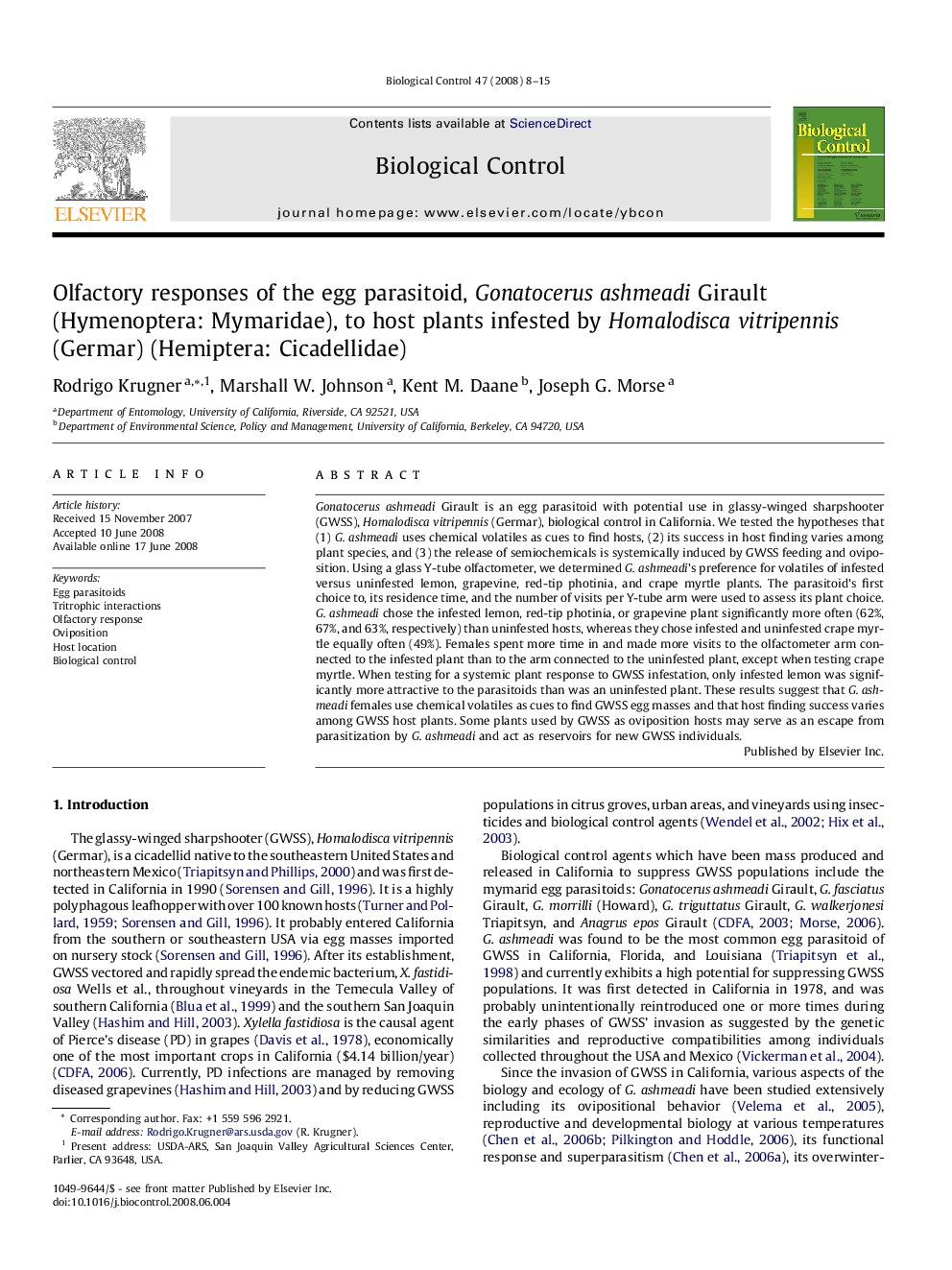| کد مقاله | کد نشریه | سال انتشار | مقاله انگلیسی | نسخه تمام متن |
|---|---|---|---|---|
| 4504764 | 1321110 | 2008 | 8 صفحه PDF | دانلود رایگان |

Gonatocerus ashmeadi Girault is an egg parasitoid with potential use in glassy-winged sharpshooter (GWSS), Homalodisca vitripennis (Germar), biological control in California. We tested the hypotheses that (1) G. ashmeadi uses chemical volatiles as cues to find hosts, (2) its success in host finding varies among plant species, and (3) the release of semiochemicals is systemically induced by GWSS feeding and oviposition. Using a glass Y-tube olfactometer, we determined G. ashmeadi’s preference for volatiles of infested versus uninfested lemon, grapevine, red-tip photinia, and crape myrtle plants. The parasitoid’s first choice to, its residence time, and the number of visits per Y-tube arm were used to assess its plant choice. G. ashmeadi chose the infested lemon, red-tip photinia, or grapevine plant significantly more often (62%, 67%, and 63%, respectively) than uninfested hosts, whereas they chose infested and uninfested crape myrtle equally often (49%). Females spent more time in and made more visits to the olfactometer arm connected to the infested plant than to the arm connected to the uninfested plant, except when testing crape myrtle. When testing for a systemic plant response to GWSS infestation, only infested lemon was significantly more attractive to the parasitoids than was an uninfested plant. These results suggest that G. ashmeadi females use chemical volatiles as cues to find GWSS egg masses and that host finding success varies among GWSS host plants. Some plants used by GWSS as oviposition hosts may serve as an escape from parasitization by G. ashmeadi and act as reservoirs for new GWSS individuals.
Journal: Biological Control - Volume 47, Issue 1, October 2008, Pages 8–15